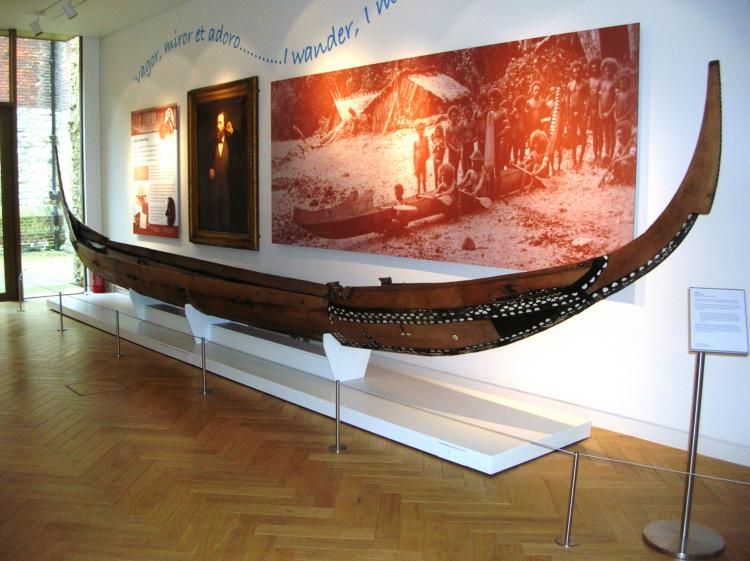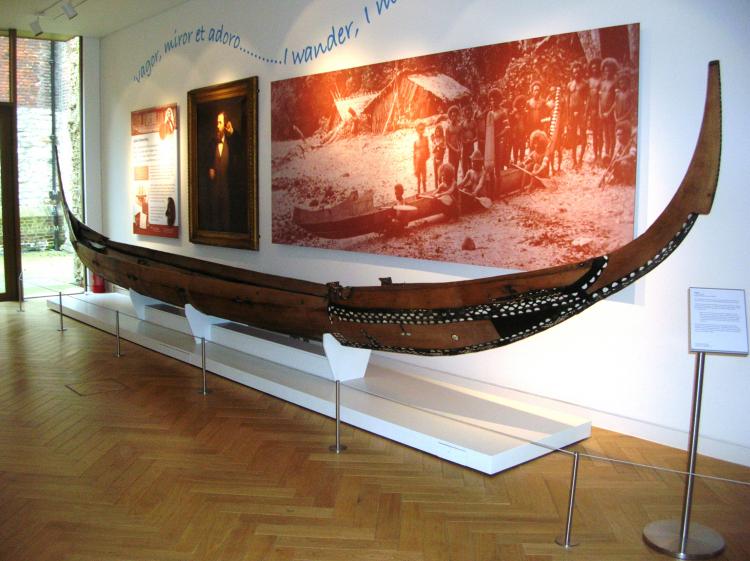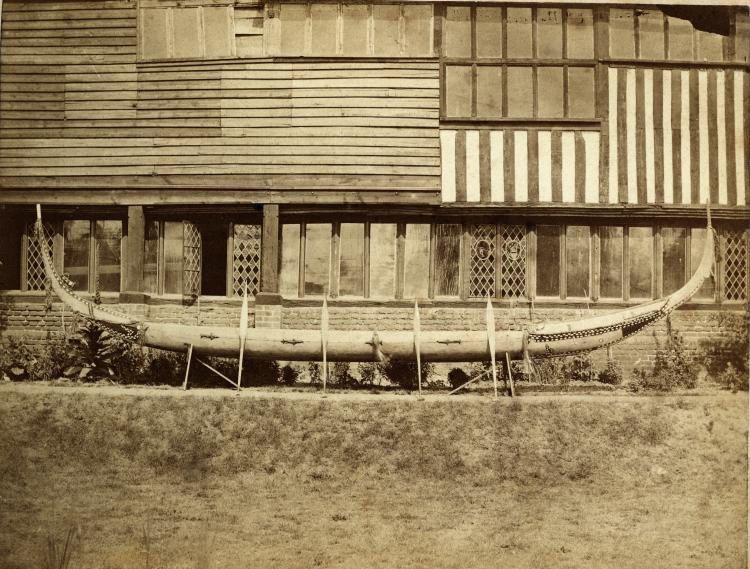Canoe
Sarah's favourite display piece in the Museum is the Canoe. She is amazed by the incredible craftsmanship and skill that was required to design and build it, as well as the beauty and simplistic detail of the mother of pearl sea shells. The word canoe originated from the word 'kenu' – meaning dugout. Although canoeing is now considered a sport, canoes were used for transportation throughout history. Sarah can just imagine the feeling of excitement as they sliced through the water, all paddling in time, on a gorgeous sunny day taking in the tropical beaches and seas around them.


